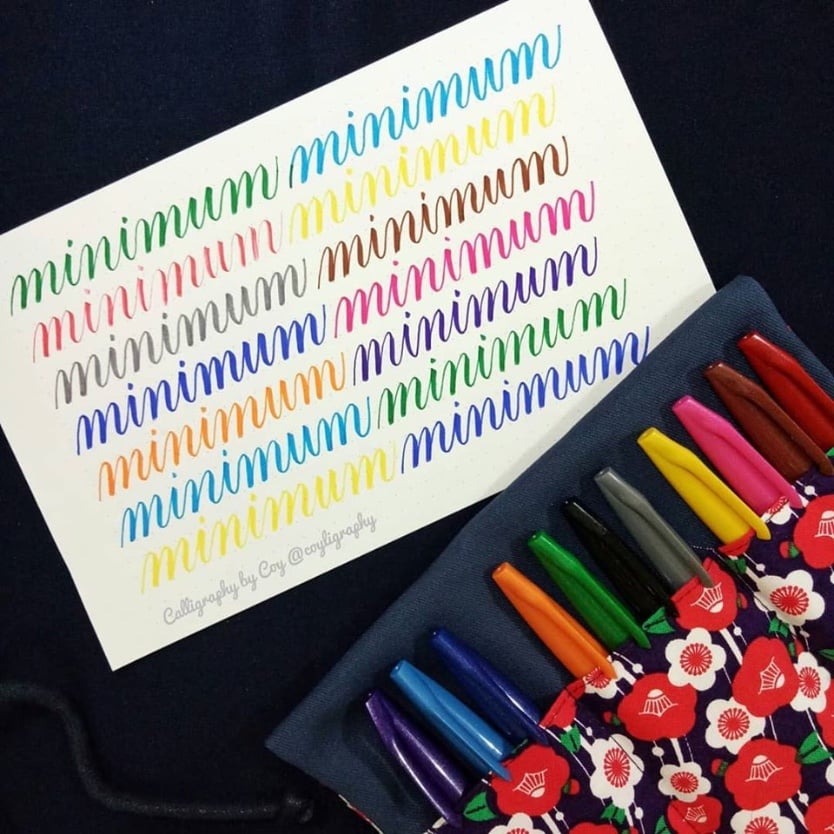- 0 Posts
- 44 Comments
OTOH, if you build a playlist manager for playlists everyone can add to, you make sure nothing anyone adds will break it…
Sadly, this was a thing even before the web, let alone social media. There’s always been people for whom the vacations didn’t even “happen” unless they get to go on incessantly about them when they come back, ideally subjecting you to two hours of photos that mean very little to you. They derive little enjoyment from actually being there, they take it from showing it others…
For some people life is not worth living without external validation. Sad.
1643 day streak here, and it still looks like it’s going to die on me any second now. I guess it was just an icon change (but… why?!)
At this stage, apart from my medication, I worry the most about my devices and chargers. Everything else, from toiletries to clothes I can buy if it turns out I forgot it and really need it. That lowered my stress with packing significantly (and I am not forgetting more things because of it).

 9·7 months ago
9·7 months agoAlan Dix’s book (aptly named “Human Computer Interaction”) is quite good, even if somewhat old by now. HCI is an actual academic discipline with, yes, tons of theoretical and empirical results that govern what a good UI should be. Many of which are indeed grounded in psychology, others in physiology, etc (what we call Human Factors). There is a whole special interest group of the ACM just about it: SIGCHI.
Do not confuse this with fashion/trends/taste. These change, resulting in widely different possible flavors of UI over the years. But the underlying principles are the same.
Another thing to remember is that the fact that Apple, Google, or someone else implemented an UI in a certain way doesn’t mean they are following best practices and guidelines. Novelty sells, even if at the end of the day it does a worse job of things…
Edit: added link to SIGCHI
This is actually a thing. When learning calligraphy, it was one of the exercises we did. If you have good enough control of your hand and pen, then all strokes should be the same length, slanted the same way, and separated by the same spacing. When you manage this apparent “unreadable” thing, it means you nailed it!
The example below comes from this site (not mine)


 5·7 months ago
5·7 months agoI wish that would work. My Epson was always on and the ink kept drying. After it clogged the print head once too many times and I could not fix that in less than 10min, I just gave up on the piece of crap. I now go to a print shop to print what I need which, admittedly, nowadays is just a couple of times a year.

 3·8 months ago
3·8 months agoNeat! I’ve always been a fan of roguelikes!
#Rogule 2024-3-25 🧝 4xp ⛩ 93 👣 streak: 1 🟩🟩🟩🟩⬜ ⚔ 🐺🐗🧛 🌰🌰 🍄

 1·8 months ago
1·8 months agoThat makes total sense. Still, it removes the pressure of choosing a server, since migration and use of several servers becomes seamless. As it is right now, there’s the resilience and future lifespan of an instance to consider, plus fragmentation of your identify as defined not by your username but by your actual “online persona” constructed from your posts, etc. (unless you’re really going for alts, of course). You can create other identities on other instances but they are separate, you “lose” your posts, etc. if something happens. if I understood correctly, that becomes less of an issue with nomadic identity?

 572·8 months ago
572·8 months agoIMO, this seems exactly what the fediverse needs to thrive. The whole “choose a server” thing is a big disincentive to adoption by most people.

 89·9 months ago
89·9 months agoWhile I’m not entirely sure wat it actually means, the message you get on that site right now might be the reason (some kind of experiment gone wrong artificially inflating the numbers):
I was creating an implementation for the activity pub instance service transfer, but it seems to have spread far. We are very sorry to those who have experienced inconvenience.
All temporarily used data has been removed and all data has been removed. The figures in the data will soon converge to zero.
I trawled unintentionally.

 8·9 months ago
8·9 months agoIs federated authentication being considered for the future? The federated model of the fediverse is great, but it runs into problems when instances “die”, you want to access different servers as they federate with different things, etc. leading to the need of having multiple accounts. If there were a decentralized network of auth servers, could use the same credentials everywhere.

 5·10 months ago
5·10 months ago99% Invisible - An excellent design/architecture podcast
20k Hz (“twenty thousand hertz”) - great show about the audio that pervades our daily lives, from notification sounds to movie special effects, passing through game sounds, sound history,etc.
Imaginary Worlds - in their own words, “ a podcast about science fiction, fantasy and other genres of speculative fiction”.
All three are done by professionals in their respective fields, exceedingly well researched, and with superb production values.

 4·10 months ago
4·10 months agoWent through this some years ago with my daughter. She was around 8 and came home from school all excited about Pokémon cards, as some colleagues started showing up with them. After getting her some, I realized that they liked to look at them, compare powers, do the odd trade and that was it…
Still, I feel it all got sorted out in the end. That fleeting interest planted the seed of interest in TCGs and now she’s 11 and we regularly play MTG against one another 🙂
I guess someone should come up with an idea for config.sys next!

 103·11 months ago
103·11 months agoThe ones with the rabbits are pretty messed up as well!


 6·11 months ago
6·11 months agoYah, I can’t imagine finger being widely deployed nowadays, the huge security and privacy hole it would be!
As for nntp and email… I also remember using email relay proxies for FTP way back when! FTP access to some places was spotty at best, so I sent a GET request to an email server that would get the file, UUENCODE it, and send it multipart by email. Not that files were big back then, but not was it possible to attach more than a few hundred KBs at once, if that.
In fact, I just remembered a funny story from when I was using the Usenet. I used a client that ran on our VAX/VMS mainframe. While browsing the newsgroups, I would get a figure for the transfer rate at the bottom of the screen. It was usually in tens of bytes per second, sometimes a few hundred. Often it stalled, etc. One day, out of the corner of my eye, I see it is showing “1”. My immediate thought as the most plausible interpretation: “damn, one byte per second. this is especially slow today!” And then I noticed the units: one KILOBYTE per second. it was the first time I had ever seen such a fast transfer rate!
A few years later, mid 90s I was trying to download a video that accompanied a conference paper. It was 6MB in size if memory serves. It took me from Friday afternoon to Sunday to manage it. Not only was it slow, but it kept interrupting and I had to start over numerous times. But I did manage in the end, and walked away with it split into a few floppy disks 🙂.
We’ve certainly come a long way since!

 20·11 months ago
20·11 months agoSo much this! I am old, I guess, but I was on Usenet for years before the web was even invented. When I became aware of the fediverse, I got serious Usenet vibes. A decentralized model, several servers, you access one and get what it sends you, but it syncs with all other servers. You‘re getting everything in the entire Usenet and what you post gets everywhere too… we’ve come full circle, I think, even if we now use ActivePub instead of NNTP… a shame people nowadays know of it as “that piracy thing” instead of what it once was (and was designed to be).





Was going to post this as well. Just replayed it again, never gets old!